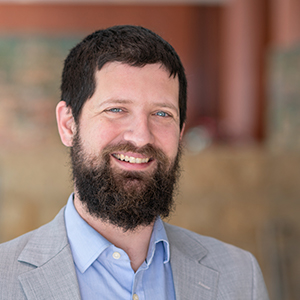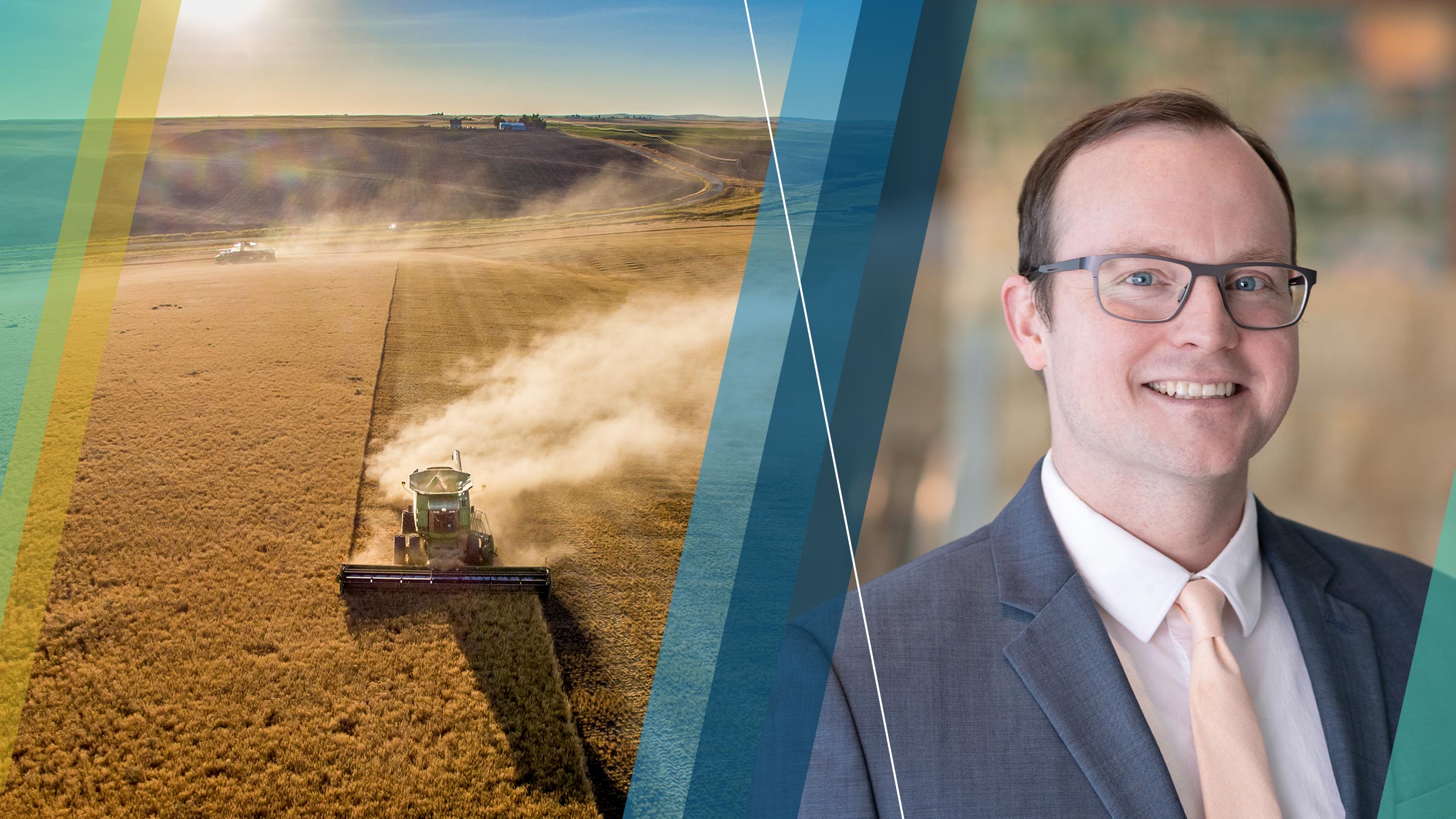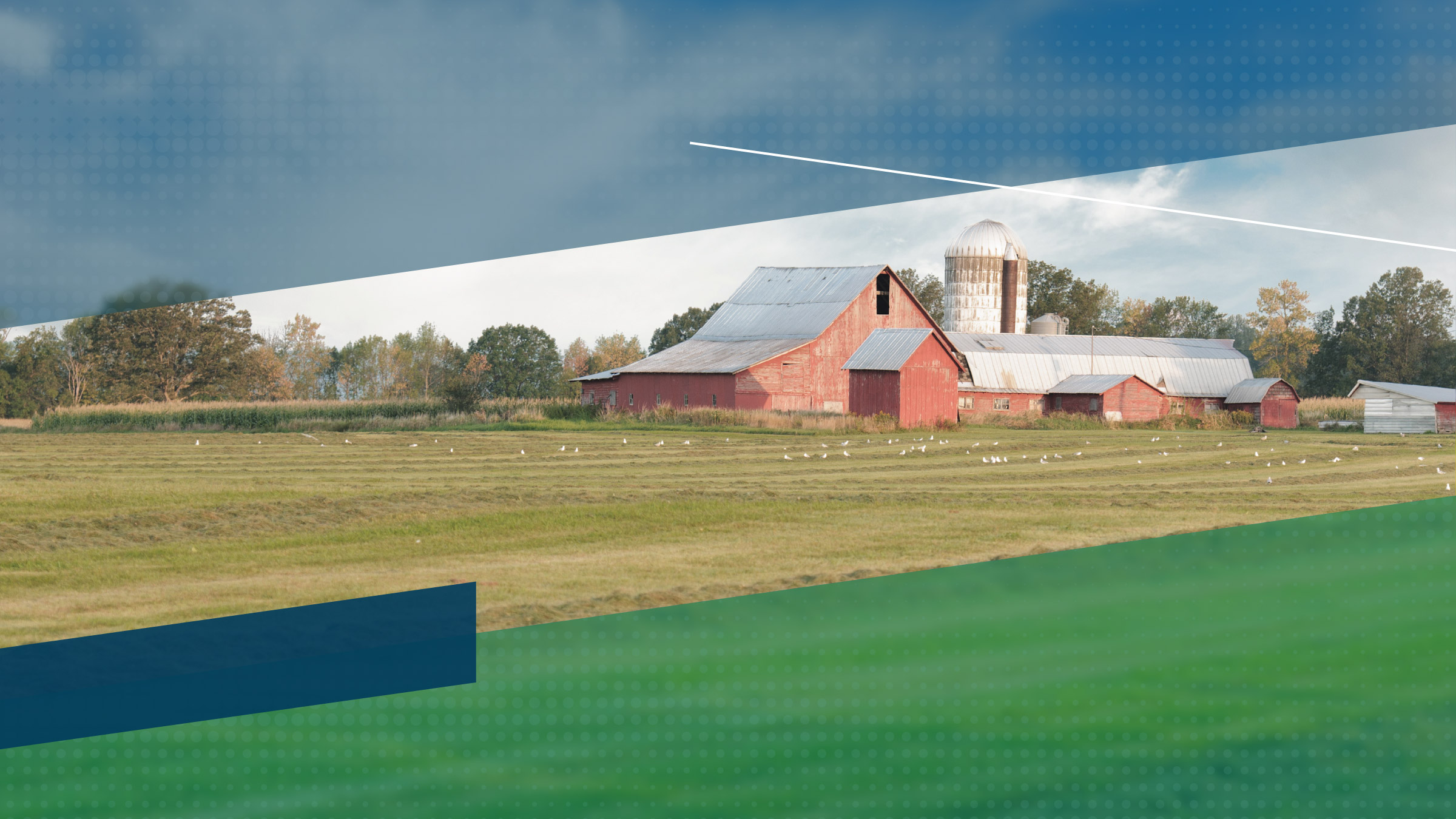
Zach Ducheneaux is the secretary of the board for the Intertribal Agriculture Council (IAC), an organization focused on efforts to improve American Indian communities by strengthening the food economy of Indian Country. Founded at the urging of Congress in 1987, the IAC received funding from Congress through the Bureau of Indian Affairs before forging out on its own in the 1990s. The organization is involved with farmers at an individual level, providing technical assistance and education, and also works at a policy level, interacting with tribal, local, state, and federal authorities to give Native agricultural ventures better access to financial resources.
Ducheneaux’s career has given him a diversity of vantage points for viewing Indian Country’s agricultural economy. In addition to his work chairing the IAC and the board of directors for Akiptan (Lakota for “bringing together or sharing”), the IAC’s emerging community development financial institution (CDFI),1 Ducheneaux is a third-generation rancher on his family’s land on the Cheyenne River Sioux Reservation in north-central South Dakota. He has also served on the Cheyenne River Sioux Tribal Council and is a board member of several nonprofits and foundations, including the Northwest Area Foundation; the Eagle Butte Cooperative Association; and Project H3!P, a community-centered organization that provides therapy and life lessons through horsemanship.
Ducheneaux recently spoke with Community Dividend to share some key things he’s learned across nearly three decades of work in Indian Country. During our conversation, he challenged readers to consider a more complete conception of healthy food and to recognize the deeply historical reasons for underinvestment in Indian Country’s agricultural economy.
Community Dividend: You grew up on a ranch and now are a rancher yourself. When did you realize you wanted to work on agriculture at a policy level?
Zach Ducheneaux: It was a circuitous route. I started out ranching in 1992, doing my own thing on the family ranch. I bought heifer calves, which are cows that are about to start producing calves themselves, for $560 each. I sold some of them a year later for $555 to make the first payment on the loan I took out to purchase them. I learned the first rule of stocks, whether they are live or on paper: buy low and sell high.
After that tough year, I was looking for ways to earn some more money to support my young family when I came across an ad for part-time farm advocates at the IAC. Back then, I didn’t even know what that was, but I knew they were going to pay me $10 an hour to work from home if I got the position.
Our primary goal at the time was helping people survive the farm crisis. We were helping farmers get into more equitable deals by renegotiating and restructuring the terms on loans for their land, livestock, or equipment. That’s when I learned the details of my mistake with those first heifers, and that lots of farmers in Indian Country were in a similar bind. The structuring of their financing hindered their ability to be profitable and jeopardized their operations. To cover the shortfall, family farmers collateralized or sold off parcels of their land when they might’ve been able to renegotiate a deal instead. They lost untold acres of land during that period as a result.
CD: What would you do differently today, knowing what you know now?
ZD: I’d approach my lender differently now. Because I was losing money on the cows, I sold some of the factory—the bred heifers—in order to make that first loan payment. I thought if I didn’t, I’d be getting off on the wrong foot with the lender. Instead, I should’ve gone to them and said, “This cow deal is cyclical in nature. How about this: Let me make an interest-only payment to you, and keep the security together, so that I’ll have a bigger operation and we will both come out better in the end.”
Banks don’t make money if they don’t have money in the community, invested. Ideally, if you can demonstrate in a restructuring plan that you can increase a bank’s security and still make interest payments, the bank will work with you. But we didn’t have anyone telling us that in Indian Country.
CD: Are there particular factors that might make that kind of problem more common in Indian Country?
ZD: There are lots of reasons why Indians frequently have a poor understanding of the way finance deals work. You can start with the sociological reasons: for our people, concepts like principal and interest, currency, and financial planning are very new. There’s no direct translation for them in our languages. There’s so much meaning and context in our languages, which developed over millennia and create certain frames of mind. That makes it difficult to translate financial terms or adopt a financial mindset for members of our communities.
On top of all that, we’ve got a European style of agriculture that’s been forced on this continent. We forget that people were growing things here and managing animals long before Europeans arrived. Instead of looking at what was going on and trying to build on it, we try to figure out the best way to grow wheat in South Dakota, which was previously one of the most diverse and resilient ecosystems on this continent.
And then, there was the culture at the farmer-assistance and credit agencies at the time. My old man taught me to always read the foundational documents for programs that are important to your work. As advocates, we started looking at the U.S. Code and federal regulations. The lenders working with our farmers hadn’t necessarily done that. Their work can be just as influenced by the culture of their office as it is by the actual rules, and so they might be missing opportunities to be more supportive of farming in Indian Country.
As a result of all of this, we had a lot of people who were asset-rich but cash-flow-poor who weren’t being equipped to make the best decisions. They needed a translator who could connect what they do to “financial speak.”

CD: After your farm advocacy work, you eventually became a tribal council member. How did your work on agricultural issues continue there?
ZD: There were things we needed to do at home to provide a better environment for agriculture to really flourish. Take the issue of land tenure. In a lot of Indian Country, especially in the Great Plains, we have large tribal land bases that are communally held and allocated out to members who apply for it, often in five-year increments. You can’t get the best loan terms with a five-year allocation of land.
Our tribe also hadn’t adopted a uniform commercial code [UCC]. That was a barrier for bringing capital onto the reservation. So, we passed a UCC and reformed our tribal land-allocation process.
CD: Did those changes go a long way in mitigating the problem?
ZD: I wouldn’t say it changed the commercial lending realities in Indian Country, but it did change some other things. For one, it took some excuses off the table for lenders and the USDA—both in lending and conservation.
So much of the agriculture that was happening in Indian Country was even more exploitative then. A lot of our reservation lands were being worked by non-Indians. They’d come pay a bare minimum for the dirt, then take their product to communities off the reservation and develop the economy there.
The changes we made built some stability in our tribal land-allocation process. We hoped it would foster Native American ownership of the assets on the land. That part’s been fairly successful. But there are still some big barriers in place, and the biggest one is that Indian Country is a credit desert.2 The supports that existed—and still exist—for farmers are predicated on the existence of a fair and accessible source of commercial credit to build upon. That just doesn’t exist in Indian Country.
For example, we’ve come to find that many banks will flatly refuse in many cases to facilitate a loan when it is for land that is held in trust by the federal government for the benefit of an Indian producer. Trust land is Indian-owned, and Indians can do what they want with it, so long as they get approval from the Bureau of Indian Affairs. A loan is perfectly enforceable in Indian Country. It’s what the Farm Service Agency [FSA] does on a daily basis. The rules for doing so have been in place since the 1950s.
But banks will use trust land as an excuse to offer unfair terms. I’ll give you one example. A Native farmer recently had an opportunity to acquire 200 acres of trust land to expand his operations. A typical mortgage on that land would be 20 to 40 years long, and at that time, you could get an FSA loan for 1.3 percent to operate and 2.9 percent to buy land. The lender offered him a 6 percent rate on a 6-year note, even though there were 200 acres of land worth nearly $200,000 securing the loan. When the average farmer is earning about a 4 percent margin in a good year, and Indian farmers face these higher interest costs, the deck is stacked against them.
CD: What are some ways to start addressing that?
ZD: On a personal level, I push bankers who say it is challenging to enforce mortgages and liens in Indian Country. People hide behind this mythology around lending in Indian Country, but I don’t know of a single instance where an Indian walked away with what he had and a bank lost out.
On a policy level, there’s a robust effort going on across Indian Country to influence the Farm Bill that will likely be passed this year in Washington. One of the requests of our Native Farm Bill Coalition is for the Government Accountability Office to take a look at agricultural lending in Indian Country, to have them look at the Community Reinvestment Act, the Federal Home Loan Bank, and federally sponsored monies banks are able to access at a discount to serve their communities. Real estate lending is the foundation of all other agriculture lending, and if that foundation is shaky or unstable, so will the rest be.
We’re also working to change the Farm Bill so that it better addresses the particular needs of Native American farmers that we’ve talked about today, and so that tribes can have more authority over some of the resources that the Farm Bill provides—for example, the Supplemental Nutritional Assistance Program, or food stamps.
At the IAC, we’re also working on starting our CDFI, Akiptan, which will focus on investing in Indian agriculture as opposed to making loans. On the board of the Northwest Area Foundation, I’ve learned about the concept of the J-curve, and patient capital. It isn’t uncommon for investors to expect a few years of losses before their investment begins to pay good returns. Agricultural lending never allows for that, but I think it would address a lot of the issues in Indian Country.
For example, I’m going on 49 years old. I’ve got a fairly liquid operation on our ranch, but I still get a chill when I get a call from the bank. I want to build an investing partner for Indian farmers so that when your investment officer calls, you’re excited to tell them about all the things you’re working on.
CD: Beyond the ability of farmers to secure credit for agricultural operations and land, how does the lack of access to credit impact the food systems of reservations?
ZD: It limits our ability to add value to our products. As of the last Agricultural Census, Native Americans produce about $3.24 billion in the sector.3 There’s probably only a few hundred million dollars of that sold in a package as food. Our cattle are sold on the hoof, and our fruits, grains, and vegetables are put on a truck to get processed off the reservation.
Of every food dollar a consumer spends, 10 to 13 cents gets back to the producer. The producer is also selling a commodity, which is much more susceptible to fluctuations in the market. The price we get for our calves can swing by 50 percent in a couple years. That doesn’t happen with the end products.
So that $3.24 billion represents an opportunity to greatly expand the economic impact and stability of agriculture in Indian Country, if we can get the credit to build an infrastructure to put that food into a package on the reservation. There are federal programs that support the development of food processing facilities, but they aren’t designed in a way that enables Native Americans to access them effectively.
CD: Does the lack of processing capacity in Indian Country also contribute to a lack of healthy food options on reservations?
ZD: If processing happens closer to home, there’s a better chance the food winds up back at home. Right now, if we got our meat back after it was sold to feedlots and processing facilities, it would probably have to travel more than a thousand miles. So, we’ve got tribally owned grocery stores that do not sell a single pound of tribally grown anything.
The implications go beyond Indian Country, by the way. People are becoming very interested in healthy, sustainable food. Well, we’re trying to redefine “healthy food.”
It doesn’t matter what the nutritional value of a piece of food is if that piece of food doesn’t benefit the community it came from. If it doesn’t, all you’re doing is displacing poor health and misery. You might be physically healthier for eating the food, but the community you got it from remains worse off and has to deal with the ramifications of poverty. So, as long as Indian Country doesn’t have access to the financial resources to get the maximum economic benefit from the food we’re producing, the person buying it is just putting their sickness on someone else.
CD: What gives you hope about the future of your work?
ZD: First and foremost, the concept and philosophy of Akiptan that will reinvent ag finance in Indian Country, and serve as an example to improve it for all producers, is one of the most exciting developments I’ve been lucky enough to be part of.
I would also put our youth leadership development pipeline up against anything I’ve ever seen. We expose our youth to the opportunities that exist in agriculture that go beyond being in the dirt, which isn’t everybody’s deal. We show them that anything you want to do, you can do in and around the food system: graphic design, legal work, and so on.
I’m excited about a future where the person across the desk from a farmer in Indian Country, the person who’s helping the farmer with financial planning, underwriting their insurance, or appraising their land, is also from Indian Country.
The youth have been returning home from our leadership programs and reminding their leaders that we are agricultural people, and that’s a big reason why agriculture is no longer an afterthought for lots of tribal leaders. We’ve held Farm Bill sessions at meetings of the National Indian Gaming Association, the Native American Finance Officers Association, the National Self-Governance Compact, and the National Congress of American Indians. Before, we couldn’t even get three people in the same room to talk about agriculture.
A lot of credit is also due to the Shakopee Mdewakanton Sioux Community. Their Seeds of Native Health program allowed us to make connections and get in touch with leaders. They injected crucial resources for the formation of the Native Farm Bill Coalition.
And the Native Farm Bill Coalition, with all of the relationships that are being built, isn’t just about the 2018 Farm Bill. It’s about maintaining the level of interest and effort in developing reservation agricultural economies. We’ve finally gotten to where it’s near a tipping point. We’re just about ready to make big things happen.
Endnotes
1 CDFIs are specialized entities that provide financial products and services, such as small business loans and technical assistance, in markets not fully served by traditional financial institutions. For more information, visit our CDFI Resources web page.
2 The term “credit desert” generally refers to a geographic area where residents have limited access to mainstream financial institutions. In its work, the IAC defines “credit desert” as a condition marked by a lack of presence and availability of fair and reasonable loan terms. In a report to the South Dakota Office of Tribal Relations, the IAC noted that although the condition does not only exist in Indian Country, it is prevalent there due to “disparate treatment of trust land as a collateral asset.” (Alternatively, “credit desert” may refer to areas with high concentrations of residents who have low credit scores or no credit histories. For more on this use of the term, see the November 2017 PERC report Changing the Credit Landscape: Credit Deserts, the Credit Invisible, and Data Gaps in Silicon Valley.)
3 The USDA conducts the Agricultural Census every five years. The 2017 census is currently under way; this reference is to the 2012 census.






